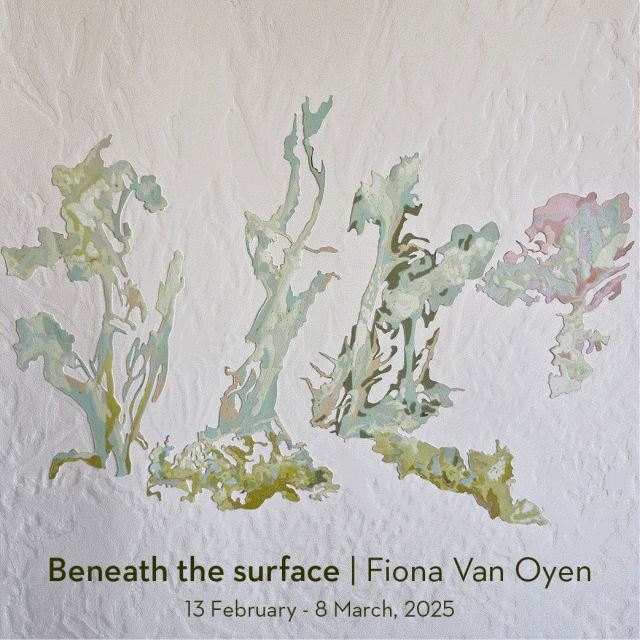All artworks in Beneath the surface are drawn from the same source image-a photo of a small cluster of 'weeds' in the Te Kuru Wetland. The word 'weeds' is in inverted commas because, today, if we have little to no knowledge of specific plants we often assume they are weeds. Were they brought intentionally from other places for medicinal, culinary, or nostalgic purposes? Or perhaps they came airborne, or attached to the sole of a shoe? Either way, these 'weeds' signify both social and environmental change.
'Weeds' now share the ground with riparian planting, helping to improve the water quality of the newly shaped and widened Cashmere Stream running through the Te Kuru Wetland Reserve. Changed from a narrow spring-fed, virtual drain-between-pastures-as it had existed over the last many decades-the newly shaped stream provides habitats for tuna (native eel) and will improve water quality as it feeds into the Ōpāwaho Heathcote River.
Today, Kahikatea logs stand upright to encourage habitats for tuna and other freshwater species. These logs, tested to be over a hundred years old, were uncovered on the Reserve site during the engineered construction of the Wetland waterway. It is from this uncovering that this new body of work-Beneath the surface-takes its name.
As an artist, I'm interested in how the scale of what we look at, in relation to the scale of our body, impacts on how we experience a thing. While every artwork in this body of work is inspired by the same original source-the photograph of the cluster of 'weeds'-at scale, each artwork invites a very different response.
Formal art elements (colour, texture, line and tone) at varying scales will encourage a different haptic and phenomenological response for the viewer standing before each work. Where the large-scale works can make us feel minute in comparison, drawing our focus outward and away from our body, the small-scale can draw us in with a sense of being on the outside looking in; while also having the sense of time having slowed. It is these things I understand as phenomenological responses -what we feel inside our body in response to external stimuli.
-Fiona Van Oyen

